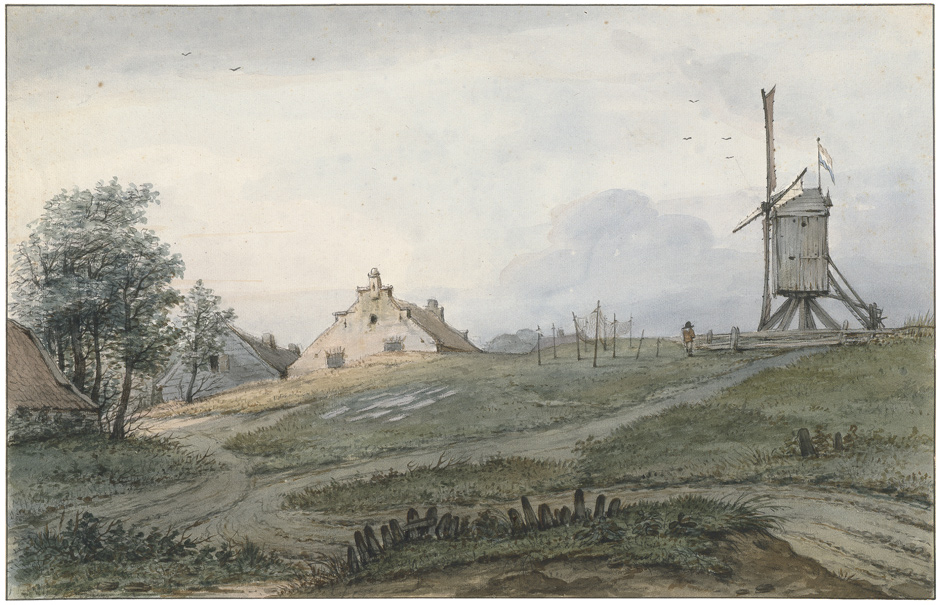Loading the page ...
Johannes Dijkhoff the Younger
(1795–1862, Amsterdam)
The Old Post Mill in Huizen. Watercolour over a preliminary drawing in black chalk; framing line in pen and black ink. 25 x 39.3 cm. Signed on the verso: “J: Dijkhoff Jr.”
This large-format, highly finished composition with colours that are still superbly fresh, shows the old 17th century post mill in the village of Huizen in Gooiland, a region in the province of North Holland. The locality probably owes its name to the fact that the former fishing village had brick houses as far back as the 14th century. Situated not far from Amsterdam, this picturesque site was a popular destination for artists in the early 19th century. A drawing made in 1815 by the Amsterdam painter and draughtsman, Jan Hulswit (1766–1822), now in the Fondation Custodia in Paris (Inv. No. 1971 – T. 37) shows the mill from the same vantage point. Another comparable drawing with the same subject matter by a contemporary, Daniel Kerkhoff (1766–1821), is in the Museum Boijmans Van Beuningen in Rotterdam (Inv. MB 1348). See A. J. Elen, “Verfraaide Gooise topografie: De standaardkorenmolen van Huizen getekend in 1815 door Daniel Kerkhoff en Jan Hulswit” in: Liber Amicorum Marijke de Kinkelder: collegiale bijdragen over landschappen, marines en architectuur, Zwolle 2013, pp. 136–37.
Johannes Dijkhoff, the author of the present watercolour, was a pupil of the aforementioned Jan Hulswit. While he can certainly be described as a “minor master”, this superb sheet shows the very high artistic level attained by Dutch draughtsmen in the early 19th century. In addition to the official academic teaching of art there were private drawing societies, such as the Zonder Wet of Spreuk in Amsterdam, which helped to foster a sophisticated drawing culture based on sound craftsmanship. Taking their lead from the great 17th century Dutch masters, Hulswit and his contemporaries worked after nature in the immediate surroundings of Amsterdam. Dyckhoff also had considerable experience as a draughtsman. The silhouette of the picturesque old post mill stands out clearly from the cool, damp, cloudy sky. The partly visible house gables and the occasional fishing nets give the scene typical local colour without cluttering up the picture with genre-like accessories. The artist’s main objective is the evocative, sensitive rendering of light and atmosphere. Dijkhoff’s virtuoso watercolour technique with its fine, transparent varnishes produces a wonderful blend of silvery grey-blue, green and brown tones. The artist thus succeeds in creating a perfect portrayal of rural peace and seclusion.
Provenance: Collection of Six van Hillegom; Jeronimo de Vries et al., Amsterdam, 7 July 1845, lot no. 684; Collection of I. Q. van Regteren Altena (Lugt 4617); Exhibition: Nederlandsche Aquarellen van 1780–1830, revised by D. J. Balfoort, K. Boon, Gemeentemuseum Den Haag, 1942, No. 40.
